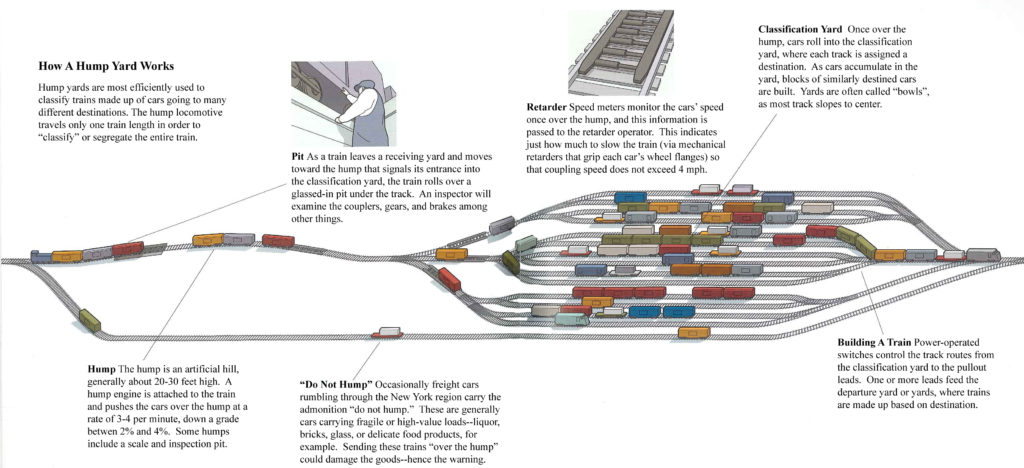
Railroads’ advantage over trucking turns on their ability to move many diverse shipments over a relatively long distance on one train. But making up a train is a cumbersome process, as no two cars may have the same origin and destination. Here’s where the classification yard comes in: cars are collected from shippers and assembled into trains for travel to a second yard where they are broken up and sorted for delivery to customers.
Two kinds of classification yards predominate—flat yards and hump yards. Flat yards consist of a set of parallel tracks interconnected by switches, and rely on switch engines to move cars in blocks or individually. Hump yards, in contrast, are characterized by a track raised above the rest of the yard; the switch engine pushes the car over the hump and gravity accelerates it into its predetermined track. Automatically operated retarders brake each car’s wheels so that it couples at just the right speed to the cars already lined up on the track.
Ascher, Kate, and Wendy Marech. The Works: Anatomy of a City. New York: Penguin, 2005. Print.